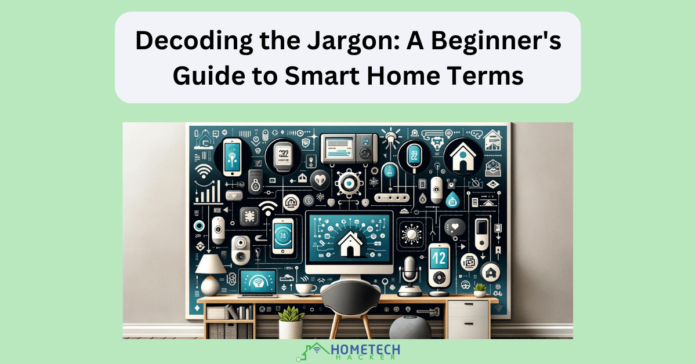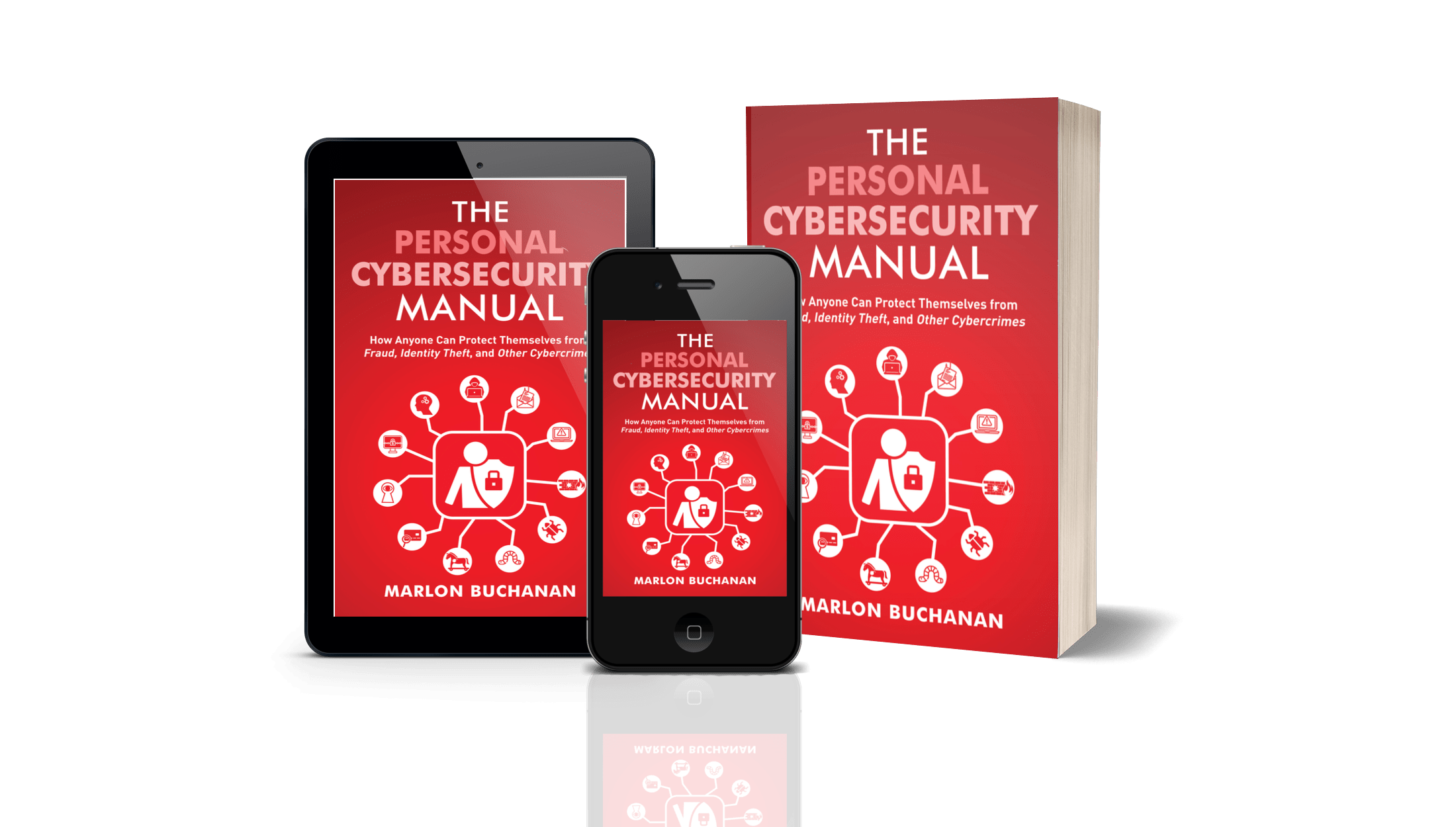
Have you ever been stumped by smart home terms? Here at HomeTechHacker, we aim to make technology simple. So, this article starts with the basics. In this article, we present common terms that we use on this site and that you’ll find in your research along with their definitions.
As the field of smart homes continues to evolve, familiarizing yourself with key terms not only empowers tech enthusiasts but also anyone looking to improve their living space. This guide aims to demystify the complex jargon of home automation, making it accessible and simple for everyone.
Smart home terms (in alphabetical order)

AI (Artificial Intelligence)
In smart homes, AI learns from your habits to automate tasks such as controlling lighting and thermostats, enhancing both efficiency and personalization.
Automation Rules
Pre-set commands or scripts that automate routine tasks based on specific conditions, like turning off all lights when everyone leaves the house.
Cloud Storage
Online storage where your smart devices can send data for analysis or backup, facilitating features like video storage from security cameras.
Encryption
A security measure that scrambles data to prevent unauthorized access, protecting your private information within the smart home network.
Geofencing
A technology that uses GPS or RFID to create a virtual geographic boundary, enabling software to trigger a response when a mobile device enters or leaves a particular area, such as turning lights on or off as you return or leave home.
Home Assistant
Home Assistant is a free and open-source smart home hub for home automation, designed to be an ecosystem-independent integration platform and central control system for smart home devices, with a focus on local control and privacy. I use Home Assistant as my smart home hub and write about it frequently.
Home Automation
The control of household appliances and systems via devices connected through the internet, allowing for automated and remote control. Smart home hubs help facilitate home automation
Home Networking
The collection of protocols, devices, and connectivity solutions that support communication between digital devices in the home. Your router, switches, modem, and Wi-Fi access points are the infrastructure of your home network.
Hub
A central device that connects various smart home devices, allowing them to communicate with each other and with cloud services. Sometimes called a smart home hub.
IoT (Internet of Things)
Connectivity framework that links everyday physical objects to the internet, enabling them to send and receive data. IoT describes devices with sensors, processing ability, software, and other technologies that connect and exchange data with other devices and systems over the Internet or other communications networks. In a smart home, smart switches, smart bulbs, smart plugs, smart thermostats, and more are IoT devices.
Latency
The delay before a transfer of data begins following an instruction for its transfer. In smart homes, lower latency means faster response times from devices.
Matter
Matter is an interoperability standard run by the Connectivity Standards Alliance (CSA). It specifies how devices should talk to each other over existing protocols like Ethernet, Wi-Fi, and Thread (more on Thread later). Matter also works over the Bluetooth LE protocol for device setup.
Mesh Network
A network topology in which each node relays data for the network. All mesh nodes cooperate in the distribution of data in the network. Mesh-enabled routers are often a good solution for Wi-Fi coverage in a medium to large home. Z-Wave and Zigbee also make use of mesh networks.
Network Security Key
A password or digital signature that you need to access a wireless network. Commonly referred to as the Wi-Fi password.
Privacy Settings
Controls available on many smart home devices that let users regulate what data is shared and how it is processed.
Protocol
A set of rules or procedures for transmitting data between electronic devices, such as Zigbee, Z-Wave, and Wi-Fi.
Remote Access
The ability to connect to a system, like your home automation system, from a remote location via the internet.
RFID (Radio Frequency Identification)
Technology used to identify and track tags attached to objects. In smart homes, RFID tags can help manage inventory or trigger automation.
Secure Routers
Devices that protect your home network by ensuring all data sent over it is encrypted and securely managed.
Sensors
Devices that detect events or changes in the environment, such as motion sensors or temperature sensors, and then provide a corresponding output. In a smart home, this output is often used to trigger an automation.
Smart Appliances
Home appliances that offer more advanced connectivity, functionality, and controls compared to traditional models.
Smart Cameras
Security cameras that not only capture video but also offer features like motion detection, real-time alerts, and internet connectivity for remote monitoring.
Smart Devices
General term for devices that possess advanced computational and connectivity capabilities, such as thermostats, lights, and locks.
Smart Home
A smart home is a residence equipped with technology that allows for the automation and remote control of various household systems and devices. These technologies typically connect to the internet and can be managed via smartphones, tablets, voice assistants, or other networked devices.
Smart Hub
The physical or software-based device that serves as the central point of control for smart devices. I use Home Assistant as my smart home hub, but there are many other options.
Smart Meters
Devices that record consumption of electric energy and communicate that information at regular intervals back to the utility for monitoring and billing. I don’t have a smart meter yet, but I use a sensor connected to my meter to monitor power usage.
Software Updates
Regular enhancements and security improvements pushed to devices to improve functionality and security. Keeping technology device software update is an integral part of personal cybersecurity.
Streaming Devices
Devices that deliver audio and video content over the internet without requiring users to download the files. Popular streaming devices include Apple TVs, Rokus, Fire Sticks, and Chromecasts.
Thread
Thread is a wireless protocol specifically built for Internet of Things (IoT) devices. It’s a low-power, low-bandwidth mesh networking protocol, similar to Zigbee and Z-Wave, except it doesn’t need a central hub or bridge. Thread devices talk directly to each other.
Voice Assistants
Virtual assistants that use voice recognition, natural language processing, and speech synthesis to provide services through particular applications. Popular options include Alexa, Google Assistant, and Siri.
Z-Wave
A wireless communications protocol used primarily for home automation. It is known for its reliability and low-power nature. As my smart home has evolved, so has my use of Z-Wave.
Zigbee
A specification for a suite of high-level communication protocols used to create personal area networks with small, low-power digital radios. Zigbee-enabled devices are less common than Z-Wave devices, but they are usually less expensive.
Final Thoughts
Understanding these concepts will allow you to select and integrate technologies that not only enhance your home’s functionality but also improve its security and efficiency. For those interested in deepening their understanding, visit HomeTechHacker Academy or explore my books focused on smart homes, home networking, and personal cybersecurity. Remember, making home tech simple starts with mastering the basics. Let these terms be the
Are there other terms you think I should add to this list? Let me know in the comments or on X (Twitter).



